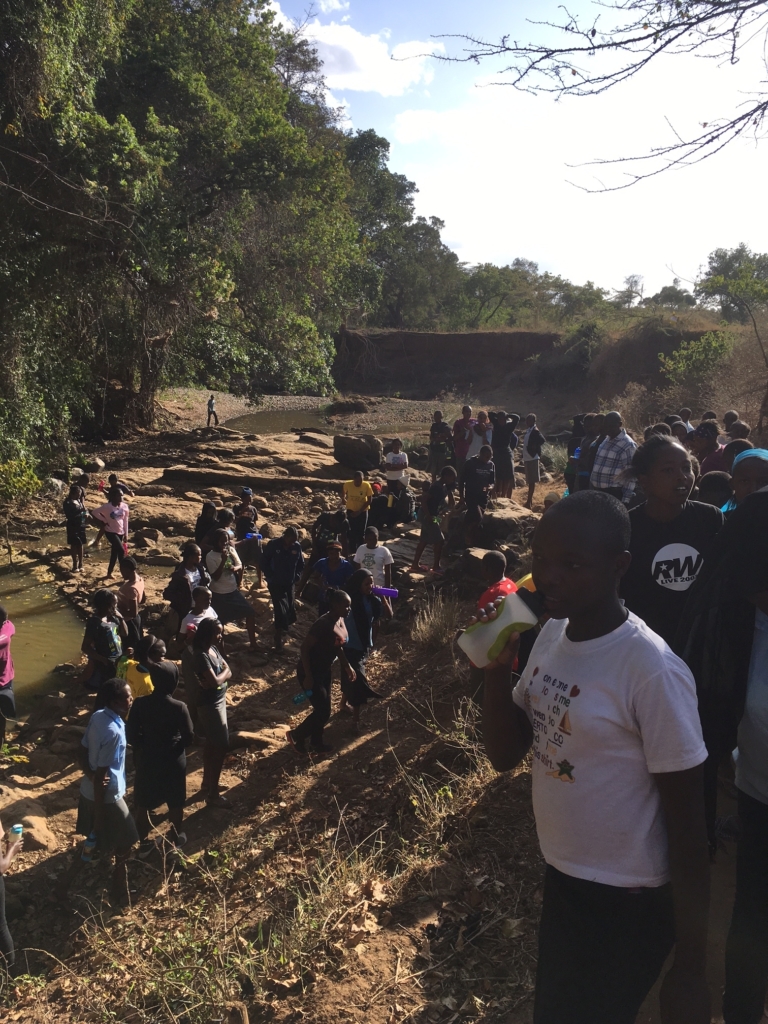Just as the sun was preparing to sink on Sunday evening, the Daraja girls gathered around the rapidly drying Daraja River. They gestured to the point in the narrow gorge where the water’s surface sits in rainier times; if the girls had stood in the same positions, they all would have been fully submerged with ample room to spare. But now, the water was hardly high enough to serve as a foot bath.
Because Daraja hasn’t seen rainfall since November.

Chris, our Facilities Manager, directed the girls’ attention to the river to emphasize the warning: the river that supplies all of our water for toilets, bathing, washing clothes, and gardening would soon be completely dried up. This message was relayed to the girls again during the Monday flag-raising ceremony, and teachers in our science classes are leading discussions on specific ways the girls can limit water.

The implications of a drought on a campus like Daraja and in a country like Kenya can be dire. The Kenyan government first issued warnings of an impending and potentially long-term drought in January 2014. The livelihoods of 1.3 million Kenyans are threatened as the first signs emerge of drought-induced famine. With no rain forecasted in the near future, food insecurity is likely to worsen. This is particularly dangerous for children under five, who, because of their particular nutritional needs, tend to be most victimized by food shortages.
Although famine isn’t a fear at Daraja, campus life could take some serious turns for the worse if water shortages aren’t resolved shortly. Soon, we will all be taking turns pumping water out of the ground ourselves.

Leave A Comment